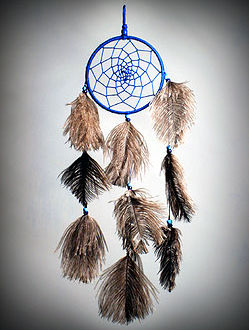by the Moon and Stars

Huntsville, Ontario, Canada
42 Yonge Street South, Huntsville, Ontario
Office -
Cell -

42 Yonge Street South, Huntsville, Ontario
Office -
Cell -
Dreamcatchers were originally designed and used by the Ojibawa Nation, however during the Pan-Indian movement during the 1960âs and 1970âs there were introduced and adopted by Native Americans. To some, the dreamcatcher was a symbol of unity across Inuit nations, and a symbol of identification for Native Americans or First Nations cultures.
Traditional methods of constructing a dreamcatcher involved tying sinew strands in a web around a wooden circular frame. Feathers were often hung from the bottom for design and astatic purposes.  This was then hung above the bed, and would protect children from nightmares.
Dreamcatchers are not meant to last forever, but rather try out and collapse as the children enter adulthood.
The Ojibwa believe dreamcatchers changes a person's dreams. Terri J. Andrews once said, "Only good dreams would be allowed to filter through . . . Bad dreams would stay in the net, disappearing with the light of day." It is believed that good dreams will actually pass through the dreamcatcher and then run down the feathers onto the sleeping child. In the past 100 years, the history of the dream catcher has almost been lost through cultural homogenization lead by European invasion. Luckily, thanks to historian Frances Densmore, much of the Dreamcatchers history has been preserved. Much of his work was spent studying Ojibwe nations, specifically on Turtle Island and the dreamcatchers of the people residing there.
